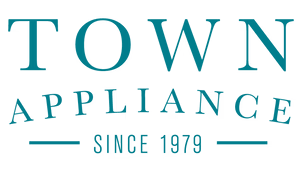Understanding Your Convection Oven
What Is a Convection Oven and How to Use It
Convection is a setting on your oven and it is controlled by a button or switch. When it is not turned on, your oven will bake like any other regular oven. A convection oven can be gas or electric. Conventional Ovens use radiant heat that emanates from the top or bottom of the oven. This creates hot and cold spots in the oven. The convection oven has a fan that circulates the air, making more evenly distributed heat, so your food will bake and brown more evenly.
There are different types of convection.“True convection” has a third heating element at or around the fan in the back that heats the air to a uniform temperature before it enters the oven. They may be covered by a panel that will direct the air past the element and into the oven. Ovens without the third element will bake less evenly. In the worst case, they mix up hot and cold air creating hot and cold spots in the oven. There is a learning curve to using this type of baking, but don’t be afraid. The best way to learn is by using your oven and experimenting.
x
Tips on Use:
-
1. Lower the temperature by 25 degrees (F).Since the convection setting is more efficient, it is a good idea to lower the temperature to get the same results as conventional baking.
2. Check the Food.Your food will bake a little more quickly so you need to check your food halfway through to make sure that it is baking nicely. Towards the end of the baking cycle, check more often to see that it doesn’t burn. You may need to reduce the baking time by 10 to 15 percent for cookies and up to 30 percent for large roasts.
3. Size of Food in Oven:The temperature and timing can be affected by the size of your roast or the number of pans in the oven.
4. Make Notes:It is a good idea to make a note of the temperature and baking time on your recipe card so you know how to bake that dish with the convection oven, the next time you do it.
5. Don’t overcrowd:Since convection ovens work with a fan that circulates the heat, don’t put too many things on the rack. This may disrupt the flow of air and you will lose the efficiency of the convection mode. -
6. Turn it On and Off:Most ovens allow you to turn the convection mode on and off. So, don’t be afraid to experiment. You can get the well-browned effect of convection at the start of the baking cycle and then turn off the convection setting so you can get the slow cooking taste. Then turn it on again at the end.
7. Baking Pans.If you are baking cookies or crispy foods, use low rimmed or rimless baking and roasting pans. The air circulation around the foods will be interrupted by the rims and you might not get the crispy effect that you are looking for.
8. Aluminum Foil.Never cover the shelves with aluminum foil.
9. Cakes, Bread or Souffles.Better not to use convection for these items because they may bake unevenly or not rise as well.
10. Parchment Paper.The fans will sometimes blow it around (same for aluminum foil). You can prevent this by using a metal utensil to keep the paper down.
Benefits:
-
The rush of heat in convection ovens speeds up the chemical reaction of the food. The results are:
1. Baking:You can bake with several trays at once (leave at least 1 inch between) and you won’t have to rotate as often. The butter in a pie crust or any flaky dough releases its steam quickly creating more flaky layers. -
2. Roasting:Chicken and Roast will brown more evenly without basting because the fat renders rapidly, sealing in the juices and leaving a crispy outer skin. The skin will brown all over and not just on top like in a regular oven. For fruits and vegetables, the sugar in them caramelizes more quickly so the edges are crispy, and the centers are moister.
3. Toasting:You get an evenly toasted color without tossing or mixing the food, such as for nuts and grains.

